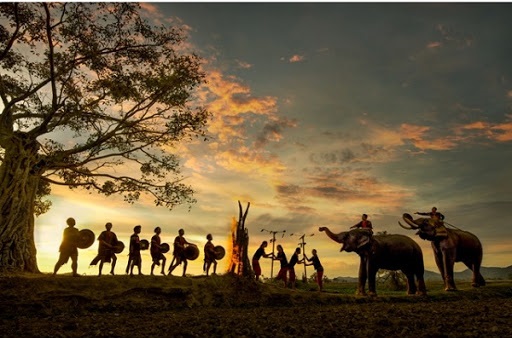The cultural space of the Gong in the Central Highlands is an important part of Vietnam’s intangible cultural heritage, recognized by UNESCO as an Intangible Cultural Heritage of Humanity in 2005. Here are some highlights of this cultural space:
1. History and Origin
Gongs have origins that date back thousands of years and may have been imported from other cultures. However, in the Central Highlands, gongs have been transformed and developed by the indigenous peoples into an indispensable part of cultural life. The first gongs may have been used in religious and spiritual ceremonies, gradually becoming a vital part of significant community events.
2. Materials and Craftsmanship
The gongs of the Central Highlands are typically made from bronze or alloys, handcrafted by skilled artisans. The gong-making process is intricate and requires meticulous attention to detail, from selecting materials to heating, hammering, and shaping. Each gong is not just a musical instrument but also carries the stories, beliefs, and culture of the ethnic group that created it.
3. Characteristics of Sound and Performance Art
The sound of gongs is distinctive, often described as resonant, warm, and captivating. Artists frequently perform gongs during festivals, accompanied by traditional dances. The blending of music and dance creates a joyful and vibrant atmosphere, attracting the participation of the entire community.
4. Social Function
Gongs serve not only as musical instruments but also as tools for communication, connecting the community and fostering relationships among people. The sound of the gongs is viewed as a bridge between the spiritual world and the real world.
5. Preservation and Promotion
Preserving the cultural space of gongs in the Central Highlands is crucial. Many activities are being implemented to protect and promote the value of gongs, including organizing teaching workshops, cultural festivals, and supporting artisans.
6. Participating Ethnic Groups
The cultural space of gongs is mainly expressed through ethnic groups such as Ê Đê, M’nông, Ba Na, Xê Đăng, and Gia Rai. Each ethnic group has its own playing styles, gong shapes, and sounds, contributing to the diversity and richness of this culture.

